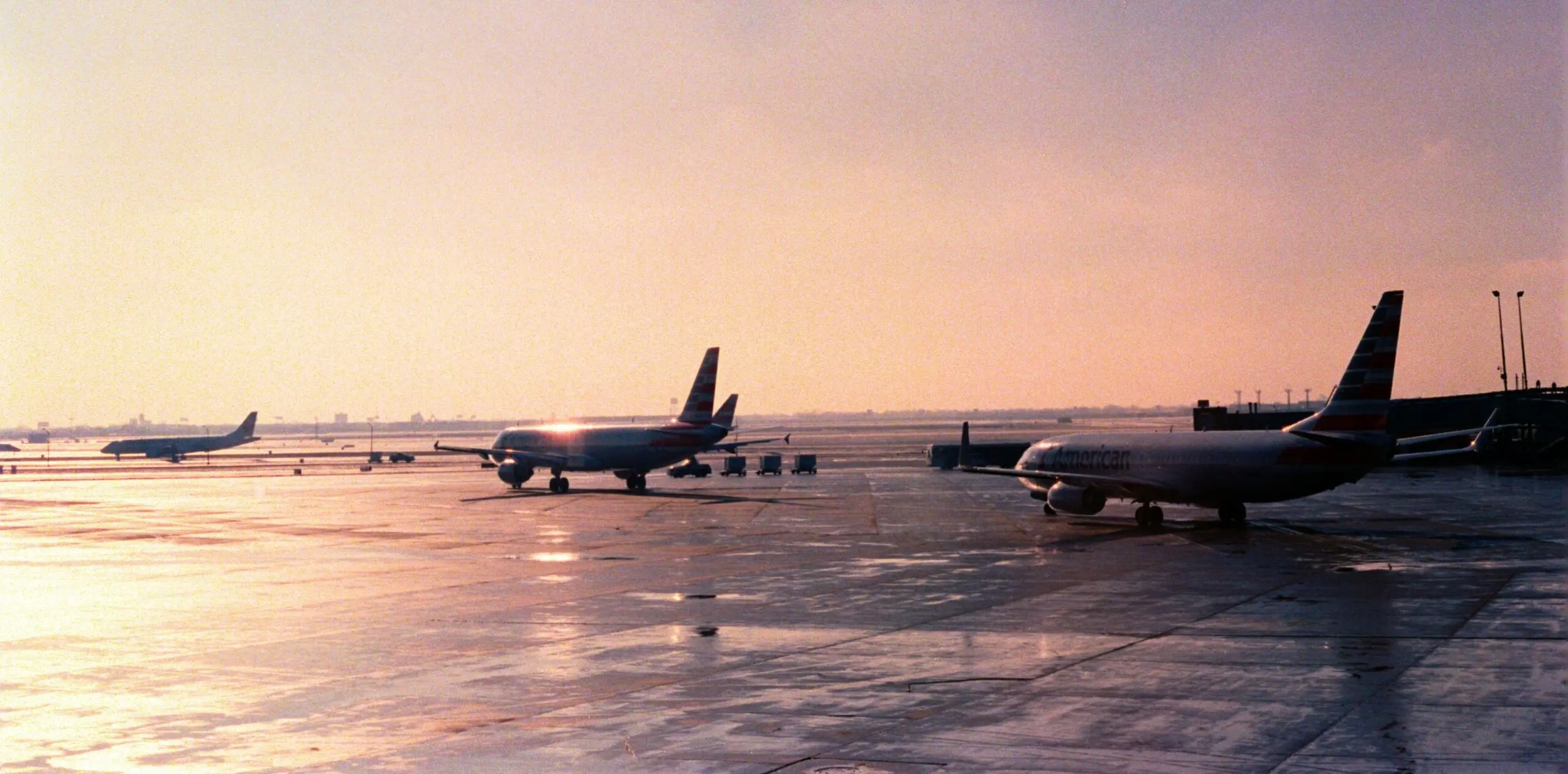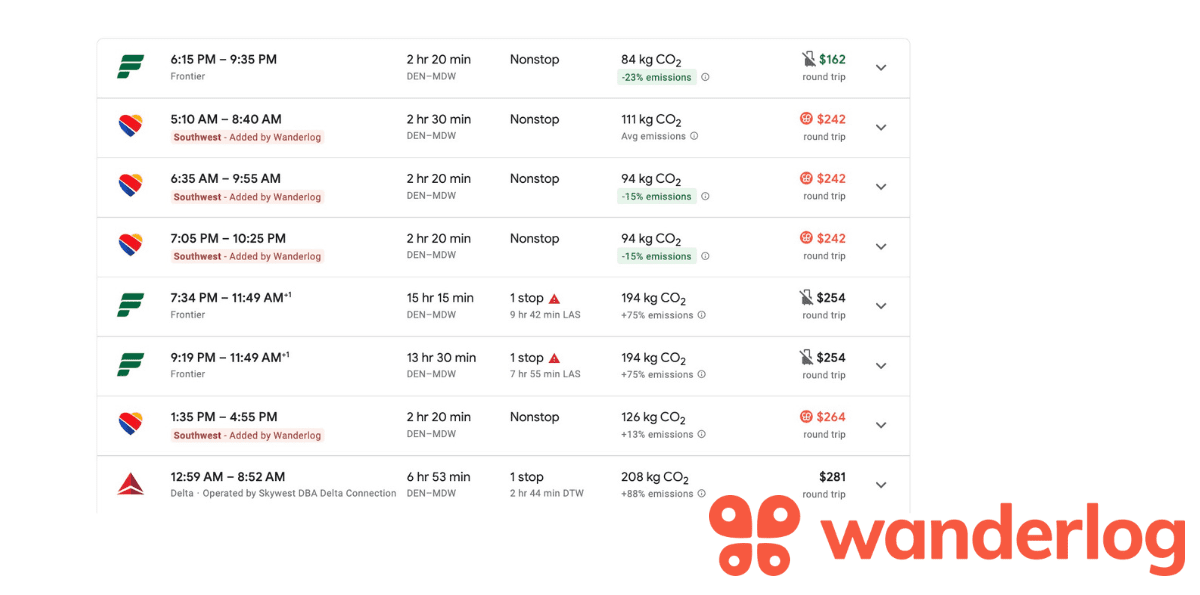Millions of Americans are suddenly questioning their travel plans as U.S. airlines began making federally mandated flight reductions to cope with the ongoing government shutdown. I'll be honest right off the bat: We have more questions than answers, too.
We're still in the early innings of how this will shake out. U.S. Secretary of Transportation Sean Duffy announced the plan late Wednesday to cut up to 10% of flights from 40 major U.S. airports starting on Friday. It started slowly Friday morning with a roughly 4% cut, but that will scale up to the full 10% by this time next week. After that, who knows?
What flights are being cut – and what will be spared? What are your options if your flight is, in fact, canceled … or you just decide it's not worth the hassle? And most importantly: How bad will this get? Are Thanksgiving and Christmas flights at risk?
The news is changing fast – stay up to date with our free Daily Beat newsletter!
- How bad will it be?
- How long will this go on? Will it affect Thanksgiving travel?
- What flights are being canceled?
- How can I tell if mine is on the chopping block?
- I'm still worried, what are my options to change or cancel?
- What are my rights if my flight is canceled?
- I'm flying soon, how should I prepare?
How bad will it be?
We don't know yet.
Friday is Day 1, and airlines are starting slow, canceling roughly 4% of their flights nationwide to and from 40 major U.S. airports before ramping up to the full 10% cutbacks mandated by the FAA by next Friday.
But did airlines have enough time to fine-tune those cancellations to limit the impact? Or will those cutbacks cause a snowball effect, leading to even more disruptions? And even with fewer planes in the skies, will those reductions be enough for the nation's beleaguered (and unpaid) air traffic controllers to keep up?
That's what we don't know.
Even before those reductions took place, Thursday was a brutal day for air travel – one of the worst since the shutdown began, in fact, with more than 7,200 flights delayed. With airlines' reductions in effect, more than 850 flights nationwide had been canceled as of midday Friday, according to data from FlightAware.
How long will this go on? Will it affect Thanksgiving travel?
Sorry, but we don't know that either. No one does.
The federal government shutdown is now 38 days old and counting – officially the longest in U.S. history – with little indication it'll come to a close anytime soon. But a deal to reopen the government could break through quickly, bringing the TSA and air traffic control workforces back to full strength within days, even hours.
That's exactly what happened during the last big government shutdown back in early 2019. Then and now, the fear of air travel disruptions has been used as a pressure point to push a deal through.
But this time around, the delays and cancellations are far greater than what we saw six years ago. And the stakes are much higher, with busy Thanksgiving travel just weeks away.
“I think you’re going to have more significant disruptions in the airspace. And as we come into Thanksgiving, if we’re still in the shutdown posture, it’s going to be rough out there, really rough,” Department of Transportation Secretary Sean Duffy said in an interview Thursday.
What flights are being canceled?
It varies from airline to airline … but there are patterns.
- Whether you're flying a U.S. airline or a foreign carrier, all long-haul international flights have been spared from these cuts – though connections could still cause problems for travelers heading abroad on a one- or two-stop journey.
- At least to start, the big three U.S. airlines – American, Delta, and United – are focusing on trimming their shorter regional flights in order to keep critical hub-to-hub routes moving.
- Alaska Airlines explicitly said it's canceling flights on routes “with a higher frequency of flights, allowing most guests to be reaccommodated with as little disruption as possible.”
United has actually published a full list of every individual flight it's canceling all the way through the weekend. It's a light, breezy read: There are hundreds every day through Sunday.
How can I tell if mine is on the chopping block?
For starters, watch your inbox like a hawk. But you may need to enlist additional help.
Airlines have already processed all their schedule reductions through the weekend, which means any cancellations for travel through Sunday have already been made. If your flight has been canceled and you haven't already received an email notification from your airline, you should soon.
Plus, the Department of Transportation has asked airlines to finalize their cancellations a full week in advance. If that happens, you should have clarity for flights next week fairly soon, too.
But you may need to be extra vigilant.
In the days leading up to your flight, keep tabs on Flight Aware's Flight Cancellations dashboard, which will show you airline-by-airline statistics on flight cancellations and delays from yesterday and today. It's also a good idea to monitor your flight on your airline's website, smartphone app, use a great tracking app like Flighty, or plug your flight number into a site like FlightRadar24.com.
While you should watch your inbox, airlines don't always automatically notify customers when they've made a change to flights. These tools can help you get the news faster.
I'm still worried, what are my options to change or cancel?
When things go sideways in air travel, airlines often issue waivers that allow passengers to change their flights – bumping travel back by as much as a week or more, for instance – without paying fees or fare differences. They're going the extra mile this time.
In an unprecedented move, major U.S. airlines are allowing many travelers to cancel upcoming reservations … even if their flight hasn't been affected by the federally mandated cuts. So if you're stressed about flying in the coming days and would rather hop in the car, get on a train, or scrap your trip altogether, you've got options.
Exactly how that works varies from airline to airline. United, for instance, is letting any passengers currently booked to fly to or from eight major U.S. airports – plus Guam (GUM) and Hong Kong (HKG), oddly – through next Thursday, Nov. 13, cancel for a refund.
On Delta, it's even broader: Flights to and from dozens of U.S. cities over the next week qualify for a refund if you decide it's not worth the hassle.
Here's a full list of all the airline policies currently available:
What are my rights if my flight is canceled?
In the U.S., air travelers just don't have many rights. But one is tailor-made for this moment.
If an airline cancels or significantly delays your flight, you can scrap the reservation for a full refund – not just an airline credit that may expire in a few months, but your money back. And it doesn't matter whether your flight was disrupted due to air traffic control shortages, bad weather, or an airline issue. If the flight gets canceled, you can get a refund and start over.
Flight not canceled, but continually getting pushed back? The cutoff to trigger a refund is a delay of more than three hours for a domestic flight, or six hours for an international flight.
Read more: Airlines Must Now Give Automatic Refunds for Flight Delays, Cancellations
Beyond that, don't expect airlines to help you out if you're caught in the mess.
Disruptions caused by air traffic control are typically deemed “uncontrollable.” Unlike controllable delays or cancellations caused by maintenance or airline crew issues, carriers aren't obligated to provide meal or hotel vouchers to passengers stuck for hours, even overnight.
I'm flying soon, how should I prepare?
I'm like a broken record lately: Hope for the best … but prepare for the worst.
While these government-mandated reductions are meant to keep planes moving safely and on time, the likelihood of lengthy delays is still high. And if those cancellations cause a chain reaction that spreads beyond, all bets are off.
All things in life and in travel are about expectations. Here's what I'm thinking about:
- If you're not already on it, change your flight to the earliest departure you can. When things go wrong in air travel, earlier is always better.
- Research a few backup flights beforehand – maybe even book one, if you have some points to spare. If you're flying into a major city with multiple airports, like Washington, D.C., or New York, consider all its hubs – not just your go-to.
- Get to the airport a bit earlier than you normally would, because longer security wait times are likely, too
- If you have travel insurance, either from a standalone policy or your travel credit card, dig into your policy ASAP so you know what you may (or may not) be entitled to if things go wrong.
- Prepare to check your airline (or, better yet, Flighty Pro!) app religiously for updates and delays
- If you have airline lounge access like a Delta Sky Club or American Admirals Club, chat up a friendly support agent for additional assistance. They often have additional information or insight – not to mention, the power to quickly change your reservation if need be.
Going into your travel day expecting issues will help put you at ease if things do, in fact, go wrong. Best case scenario? Everything goes off without a hitch, and you're ready for the next curveball the airline gods throw you. Worst case? You're better prepared to handle that curveball right away.
After immense dread while boarding 3 hours late … and more dread hearing crew talking about timing out … we are airborne!
Rule 1 for dealing with disruptions: Earlier is always better.
2: The next plane you can board is the best plane.
3: it’s not over til you’re airborne. https://t.co/6Lcz8cAdME
— Kyle Potter (@kpottermn) November 7, 2025







